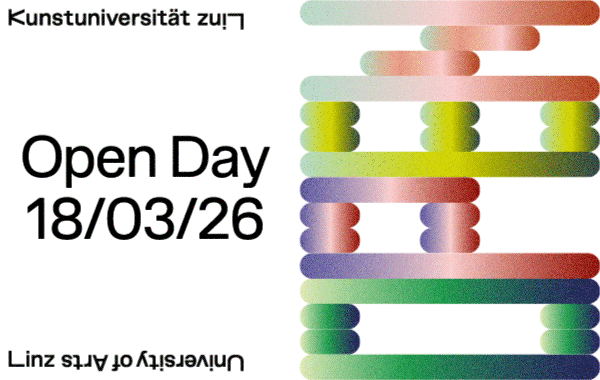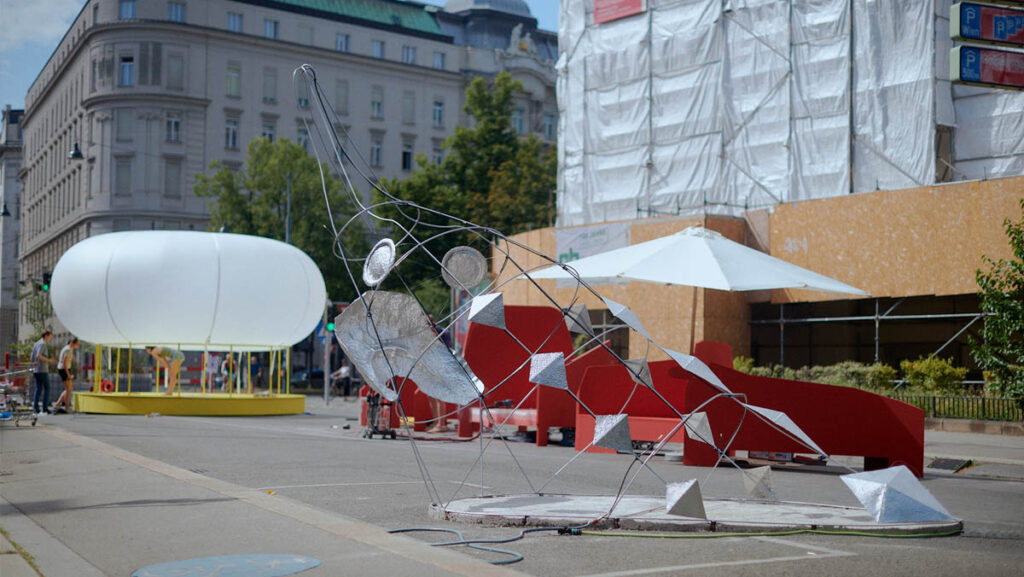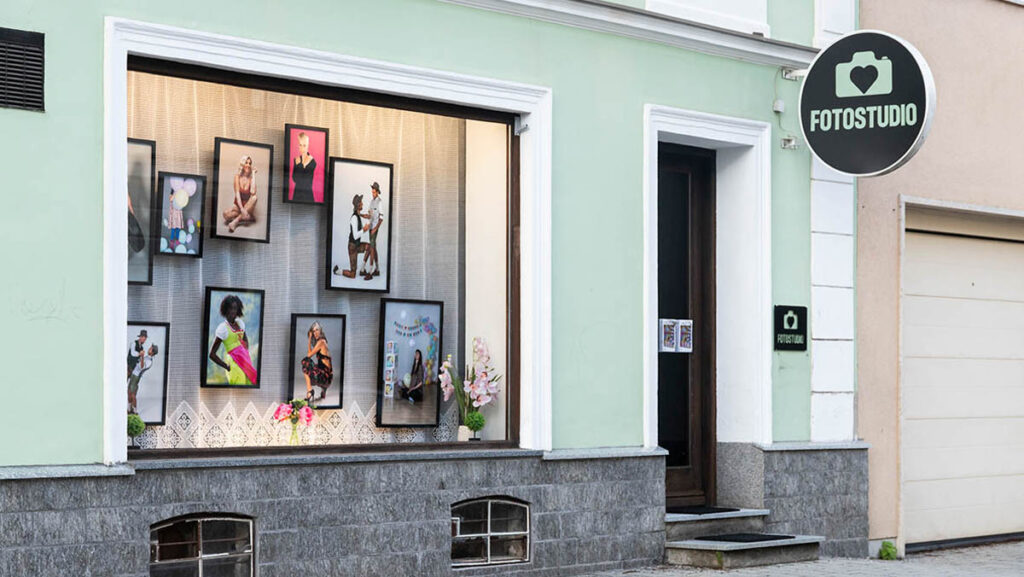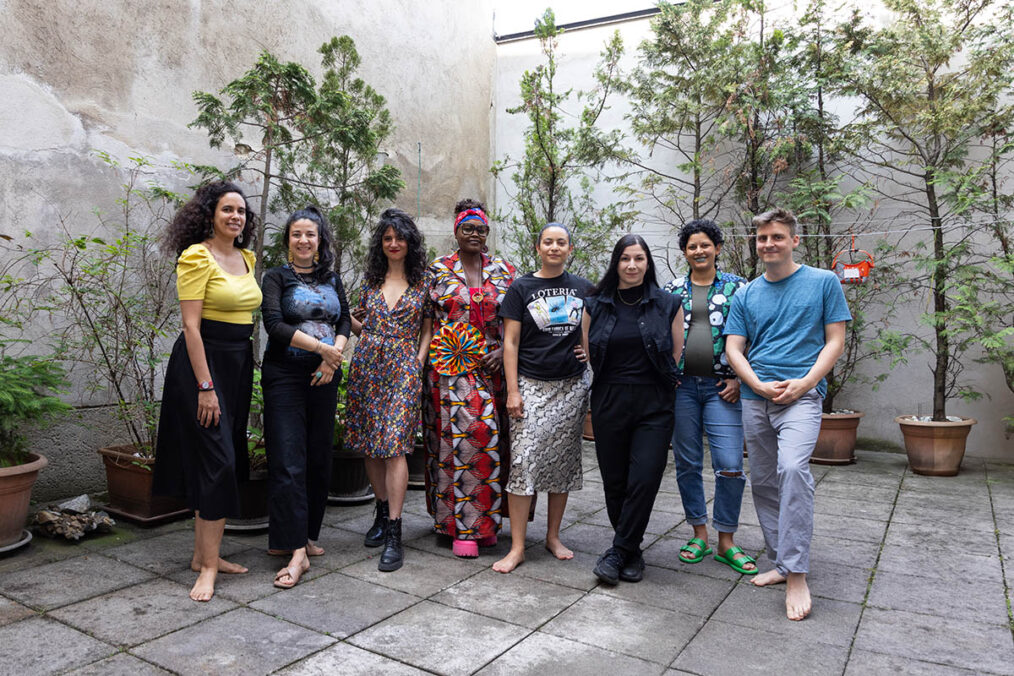
Can you tell us more about the initiative behind GLIMPSES? How did this whole program come together?
Guadalupe Aldrete: I started this artistic research almost two years ago. I’ve been working on this theme of Intergenerationality, how different generations within a family influence each other. I started with my own family, and then it just grew… spiraled far back, even into this almost mythological time, like the “cave” period, so to speak. In the meantime, I noticed that many artists are also interested in this topic—intergenerationality, ancestry, and memory, but from very different perspectives. And part of my practice is co-creation, which emerges directly from my artistic work.
As a curator, I don’t come from an academic or theoretical background. It’s more about: Let’s share our questions and see what arises from that. I decided to invite other artists to contribute their own thoughts on these themes: ancestry, memory, and how memory shapes who we think we are. I interpret this as identity, but I’m also aware that identity is always changing, and I like that it changes.
I didn’t want to make just another group exhibition. I wanted each artist to have their own space to respond. At the same time, I wanted us to come together to talk and discuss, so that’s when I thought about inviting curator and artist Frida Robles Ponce. I wanted someone not involved as an artist, but rather someone who could act as a kind of interlocutor, bringing in questions and holding space for discussion.
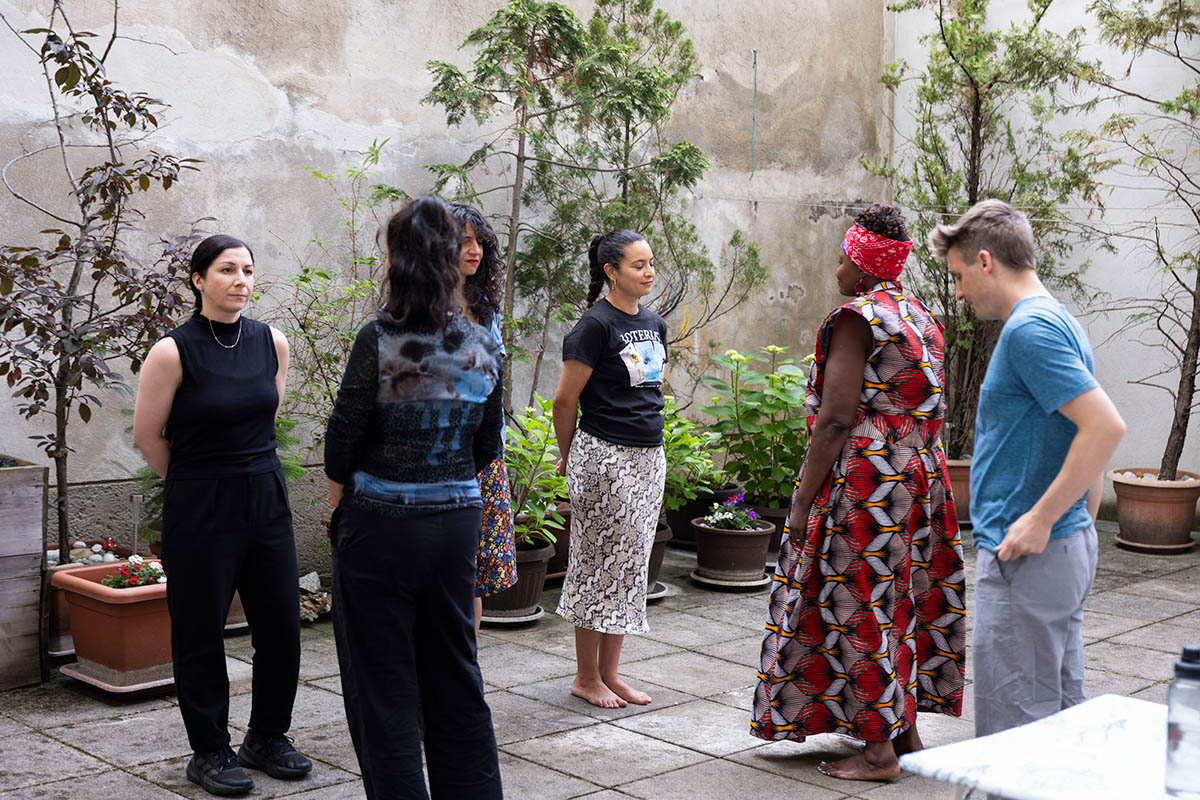
Frida Robles Ponce: I’ve always been interested in the social aspect of art. I’m especially drawn to public art, but I’m interested in how the personal is also political and social. I believe we are all historical beings; we’re not isolated individuals, we are always part of something larger. As an artist, I work with performance, installation, and text. And right now I’m doing a PhD in art history, focused on counter-narratives of history. So in that sense, it connects deeply with Guadalupe’s interest in memory and ancestry. My PhD specifically looks at South African performance art.
How do you think this lens of social engagement is visible in GLIMPSES? Whether in the exhibitions or the overall program?
Frida Robles Ponce: My position is both internal and external. I’d say that what stands out is the diversity of the artists in terms of their backgrounds and perspectives. And that’s what gives GLIMPSES this kaleidoscopic view of memory. You have someone like artist Paula Flores, who works with mycelium and non-human memory. Then you have artist Louise Deininger, who comes from Uganda/Kenya and brings a very different understanding of ancestry and ancestral knowledge. Maria Gomar Vidal contributes a layer to Spain’s fascist past, so again, a completely different political history. What’s exciting is that memory becomes a political structure here. GLIMPSES makes space for different threads; for example, how can the memory of mushrooms be political? And how can that relate to the memory of fascism in Spain? It opens up these fluid, poetic connections.
Guadalupe Aldrete: The reason why I selected these artists is that they all show the intersection between personal, political, and social perspectives, but from very different angles. For instance, in Louise Deininger’s work, the history of violence in Kenya and Uganda is extremely present. It reflects the deep impact of political systems at a personal level. And both Louise and Maria Gomar Vidal work closely with communities. Their works aren’t studio pieces reflecting on politics abstractly; they’re created through collaboration. Louise, for example, collected pictures of people’s belly buttons, a very intimate and vulnerable experience for those involved. And Maria’s rose installations center on personal family stories from post–Civil War Spain. These are singular stories that resonate collectively. And in upcoming shows, we also see this with Rafael Lippuner. He works with body memory, and his performances only exist when a community participates. His work is about being together and experiencing memory in real time, in a very physical, shared way.
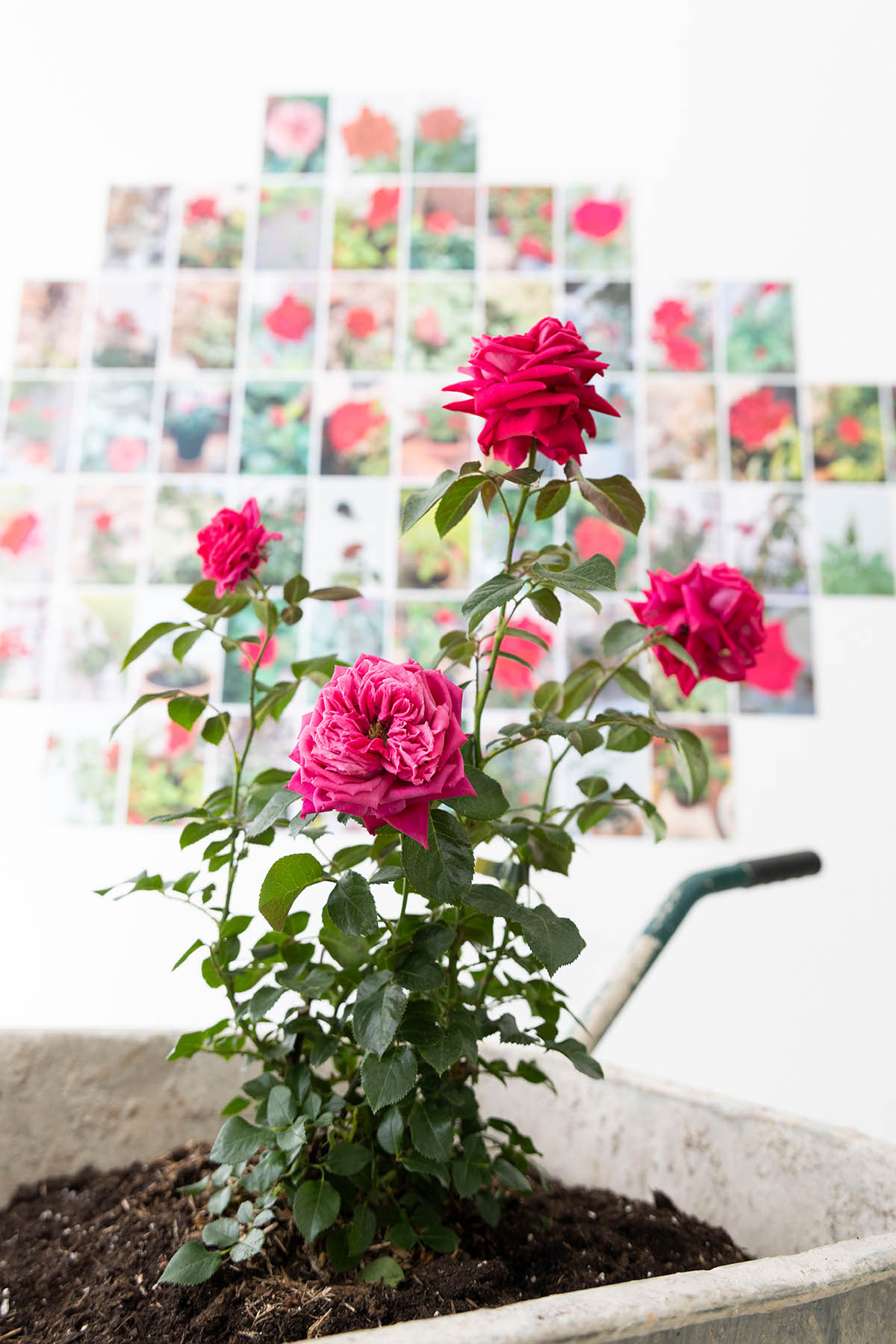
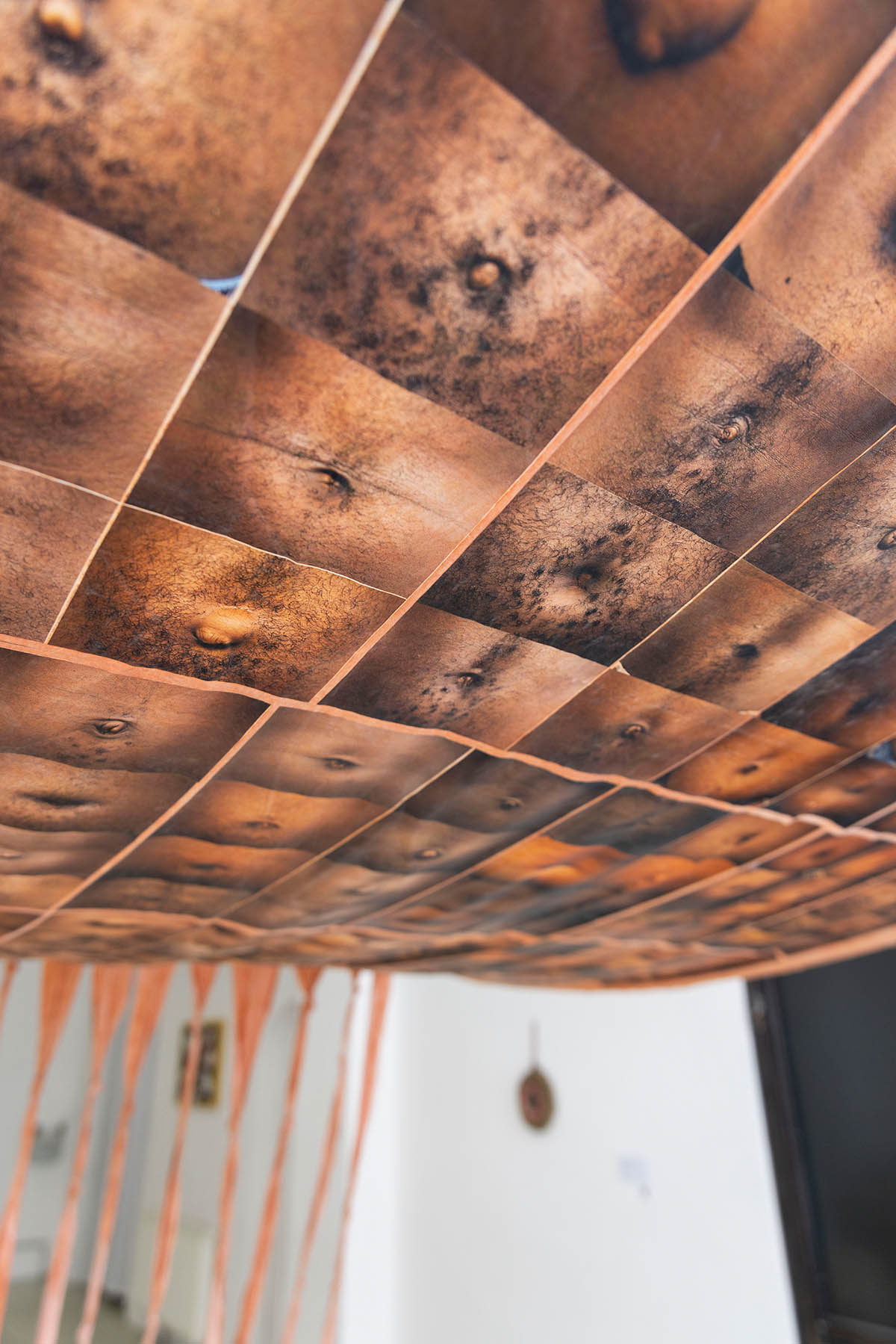
Do you think these collaborative, community-based practices have the power to change something? Not just represent trauma or history, but make a statement that affects the future?
Guadalupe Aldrete: That’s such a crucial question. And it’s crucial to me. I only invited artists who work ethically with other people’s stories.
We’ve already seen this happening in the first two exhibitions. Both Louise and Maria have told me that people from their communities said they felt healed through the projects. The artists weren’t trying to explain them or use them: they created space for people to speak and to connect. Louise focuses on young people, offering them creative tools to process complex feelings through art. Maria’s project, on the other hand, helps families talk about histories that have been taboo for generations. It’s both personal and social. At the same time, Spain’s far right is gaining strength again. So her work isn’t just about the past—it’s a reminder of what’s at stake right now. It’s not about showing blood or making accusations. It’s about saying, This happened, and we can grow from it. That’s the healing power.
We’re dealing with heavy subjects—violence, war, trauma—but the goal is not to re-victimize or sensationalize. It’s about finding paths toward healing.
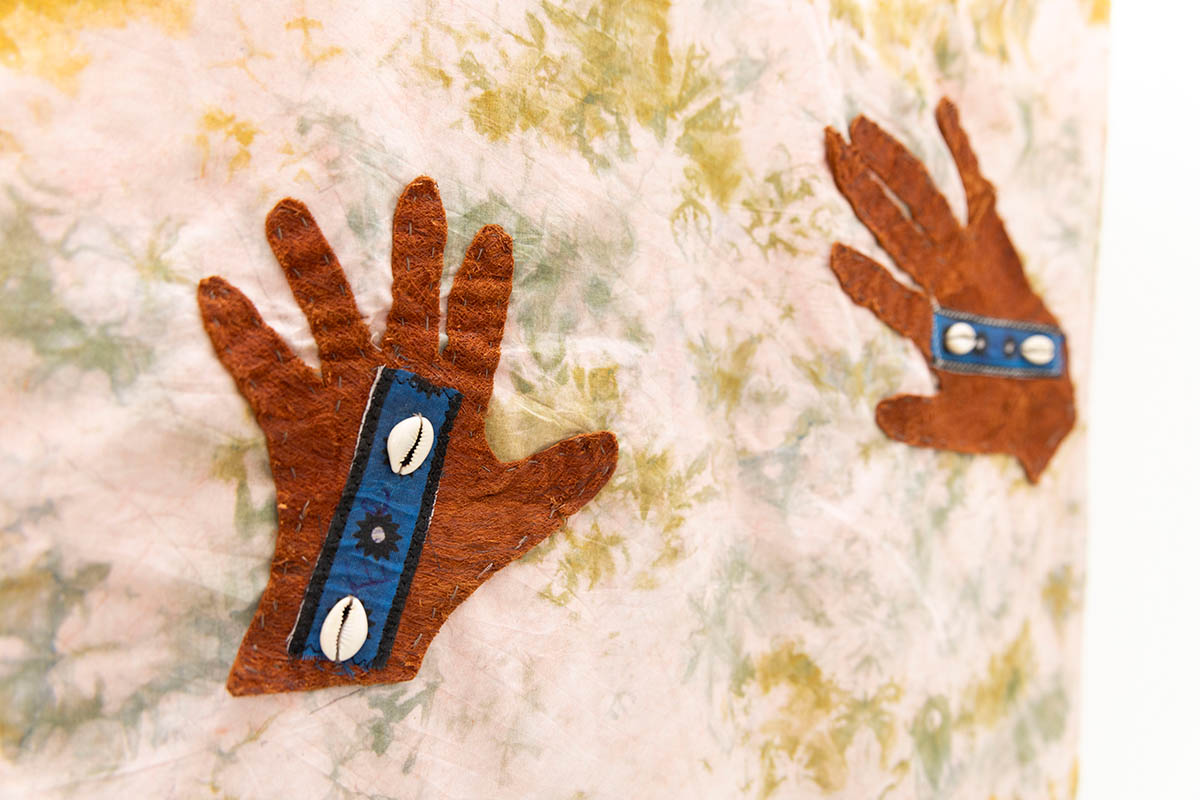
The way history is addressed, not as a static or singular narrative, but as something more layered, even conflicting, in GLIMPSES, is very important. Could you speak more about that?
Guadalupe Aldrete: History is often told as a single, linear narrative: clean, authoritative, and curated. But that’s not how memory works. History can be violent in its simplification. So what we’re trying to do here is step away from singular discourses and move into something more plural. When we allow different perspectives to exist side by side, especially those that challenge dominant narratives, it becomes denser, but also richer and approachable to more people.
Frida Robles Ponce: We can’t assume that just because we’re “contemporary” or “aware,” we fully understand everything. It’s essential to approach history, memory, and knowledge with some humility. What’s available to us to learn is often shaped by a canon that excludes so many perspectives. But oral histories, community memory, and embodied knowledge offer alternative ways to access stories that aren’t found in books or archives.
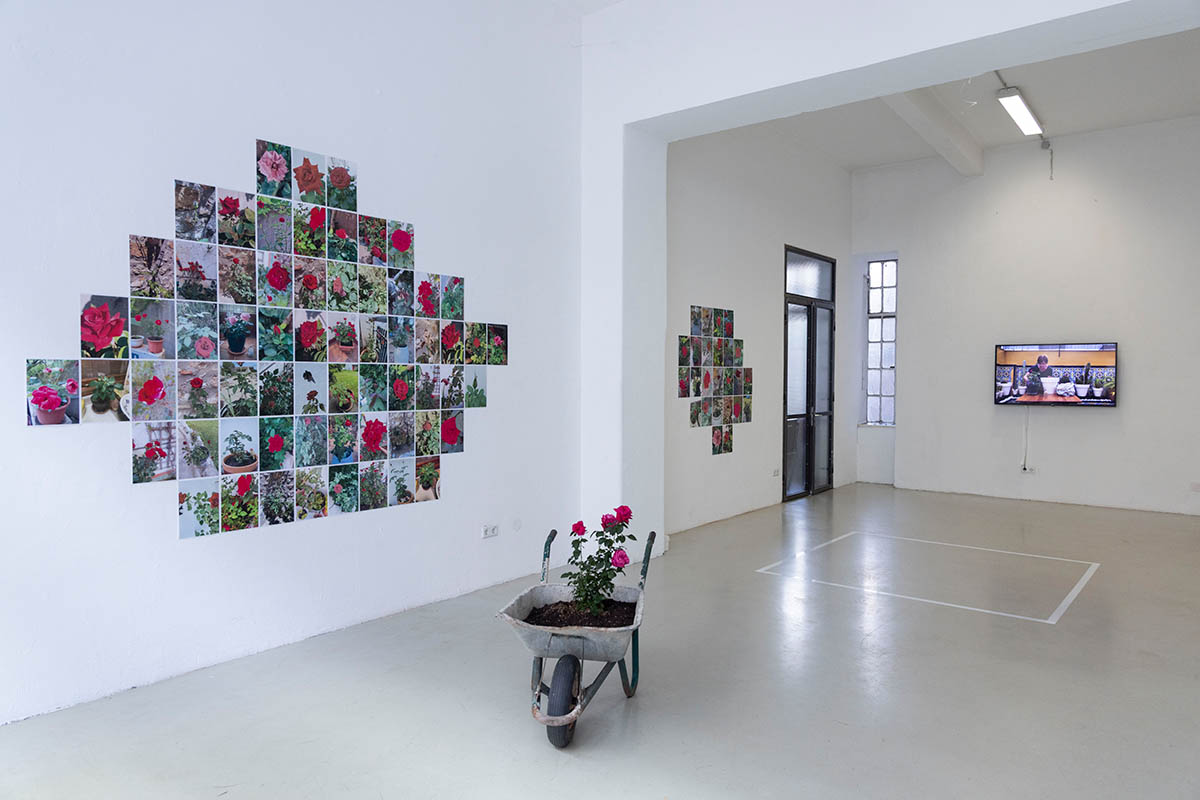
Would you say that GLIMPSES is trying to scratch at that surface? To dig into what is often untold?
Guadalupe Aldrete: I would say yes, Bettina Eigner’s work, for example, explores trauma and secrecy in post-war Austria, things people are often not “allowed” to speak about. It’s not that they’re secrets, but they’re untold, unspoken. And that silence is also a kind of violence. When I came to Germany and later Austria, I had very little knowledge of how history lives in people here. But the pain, the shame—it’s there. Even with all the efforts to process it, it’s still deeply rooted. And shame makes healing hard. That’s part of why I’m also participating as an artist, not just a curator. I needed to respond from my history, too.
Another example, Nina Sandino, who’s a dancer and choreographer participating as well, brings a crucial dimension to the project: the embodied. Her work explores ancestry through movement, but also the relationship between the human and the non-human. She reminds us that memory isn’t just in our minds: it’s carried in the body. That’s a form of knowledge, too, and she brings it in a very powerful way.
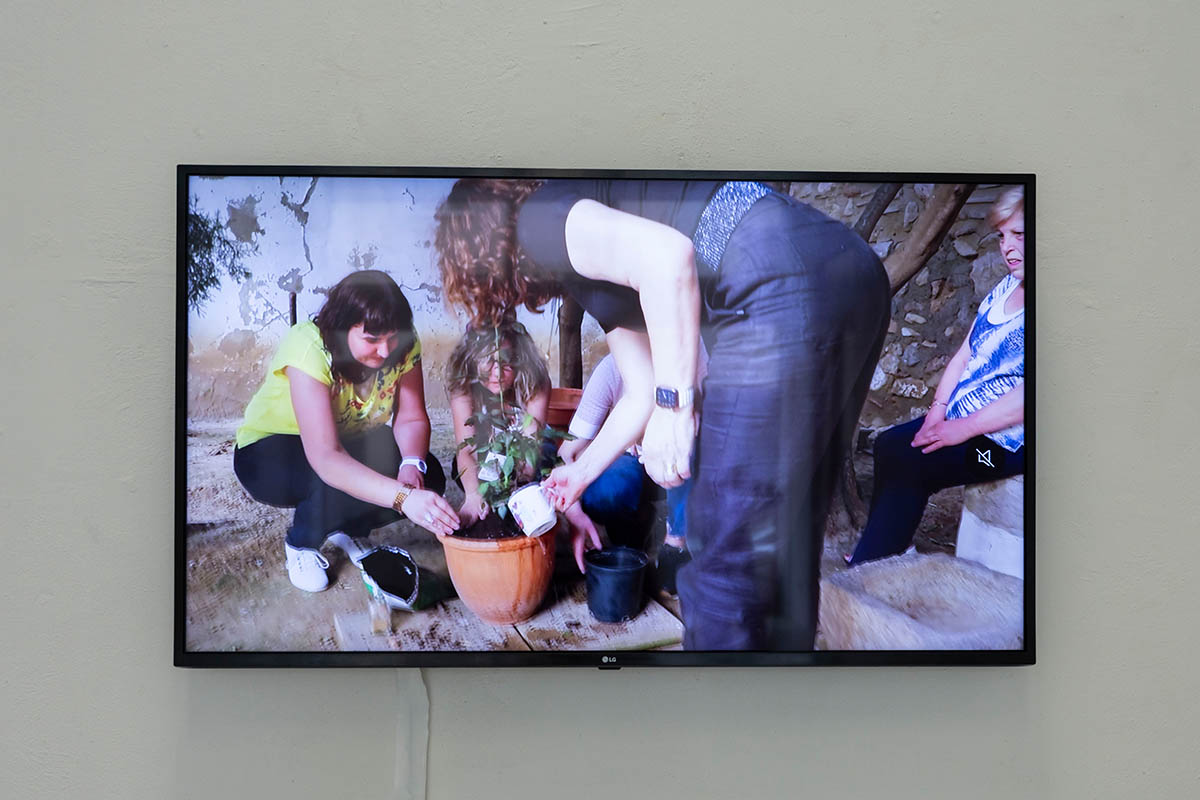
Frida, you also led a discussion table with all the participants. Can you talk about the approach you took there?
Frida Robles Ponce: The idea was to create a space that wasn’t just about presenting work but about sharing practices concerning broader theories. I used methods from systemic constellations, which is often called family constellations, not in the traditional sense, but as a tool to think about ancestry, belonging, and memory in embodied ways. We didn’t just sit and talk; we moved, we thought through the body. I also brought in theoretical texts from thinkers like Jacques Derrida, Saidiya Hartman, Aimé Cesaire, and others. These helped ground our conversations in a wider intellectual field while still keeping them personal and intuitive.
Guadalupe Aldrete: It wasn’t about performing knowledge; it was about learning from each other as artists. Frida created a space where we could really reflect not only on our practices but also on where those practices come from.
How do you see this program, GLIMPSES, interacting with or resisting the art market? Do these works “fit” in the market?
Guadalupe Aldrete: Good question. It’s not that we’re “anti-market,” but we’re not led by it either. I care deeply about quality in process and in output, but for me, what’s behind the work is even more important. What’s sustaining the practice? That’s what inspires me. We’re not just producers; we’re human beings creating from deep personal places. However, I would say yes, in a way it fits the market too, since I want the exhibitions to show also the artists’ professionalism and to open up opportunities, even for sales.
I want the viewer to see that there’s more here than an object on a wall. There’s a practice, a position, and a voice.
Frida Robles Ponce: I think that’s a crucial distinction. Supporting artists, not just artworks, is something we as curators need to prioritize. And I do think these themes—ancestry, memory, and history—are very present in the wider art discourse. You see it in major biennials, in university curricula, and in criticism. So in that sense, the program is very “current.”
Guadalupe Aldrete: We are also privileged here in Austria to have public funding that allows for experimentation. We don’t always have to make work that is “sellable.” That gives us freedom to go deeper, to take risks, and to prioritize substance over marketability. That’s something to be grateful for.
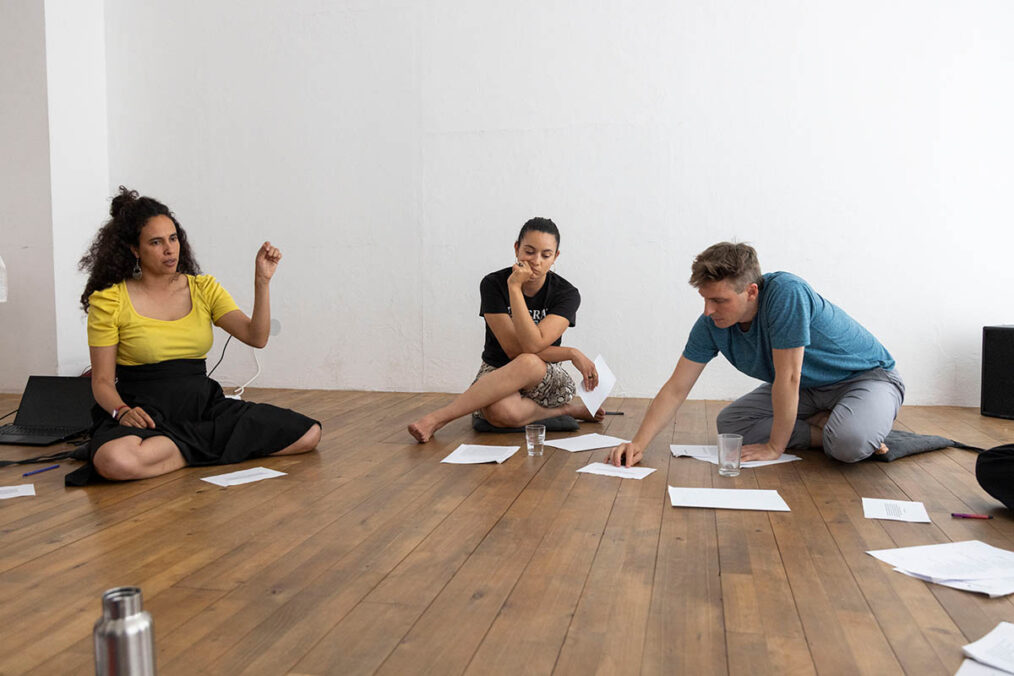
UPCOMING EXHIBITION:
Exhibition: just thinking loud by Rafael Lippuner
Opening: Wednesday, September 3rd, 2025 at 19:00
Performative Tours: Friday, September 5th, 2025 at 17:00 and 19:00
(in the frame of the Reindorfgasse Strassenfest)
Exhibition Duration: September 3 – 21, 2025
visits by appointment: eindorf.kunstraum@gmail.com
“Thinking is a silent and inner, personal process — but loud pushes it out there, almost audible as language, as materials and artifacts reverberate built-in ideas and concepts. The objects in the show speak about the movements which align with their designed functionality — automated movements which have been learned and copied, which we embody and pass on since generation.”
— Rafael Lippuner
Lippuner’s work speaks to the questions at the heart of GLIMPSES: How do histories move through us, not only in what we say, but in how we move, use space, and relate to objects? His performative environment gently draws the audience into this reflection, turning routine action into an intergenerational “choreography” of presence and response.
Fluid Bridges is an immersive performance-installation exploring ancestral memory and identity through the body. Guadalupe Aldrete treats the body as a vessel for personal and inherited histories, using movement, material artifacts, and imagined landscapes to connect with her roots, especially those in northern Mexico. The work blends somatic experience with archaeological reference, bridging personal and ancestral pasts in a poetic space where inner and outer worlds meet.
Ancestral Synonyms – www.instagram.com/ancestral_synonyms/
eindorf – www.eindorf.at
Detailed program you can find here: www.les-nouveaux-riches.com/exhibition-series-glimpses/
GLIMPSES. The Intergenerationality of Identity – exhibition series and dialogue platform. A project by Ancestral Synonyms, KASAL & eindorf. Initiated and curated by Guadalupe Aldrete and co curated by Frida Robles Ponce. Participating artists: Louise Deininger, Maria Gomar Vidal, Guadalupe Aldrete, Rafael Lippuner, Paula Flores, Bettina Eigner, Nina Sandino.
Guadalupe Aldrete creates performative landscapes using a transdisciplinary approach. Her current focus lies in exploring ancestral relationships among family members and the immaterial heritage passed down through generations. In her works, she tries to catch glimpses of our ability to transcend, inviting us to observe our own stories and inspiring dialogue and reflection on the interconnectedness of the past, present, and future. www.guadalupealdrete.com, www.instagram.com/guadalupe_aldrete
Frida Robles Ponce is an artist and curator based in Vienna, Austria. She engages in processes of self-questioning and healing, understanding the personal as political. Her artistic practice varies from public art installations to performances to textual work. She lectures at the Theater, Film and Media Studies at the University of Vienna and is a PhD candidate at the University of Applied Arts Vienna. www.fridarobles.wordpress.com



